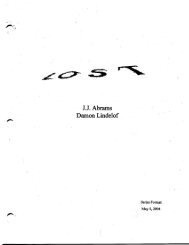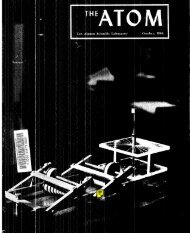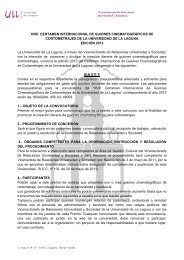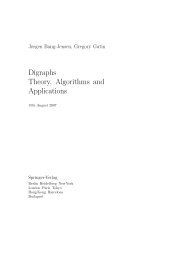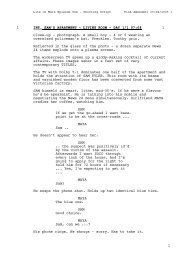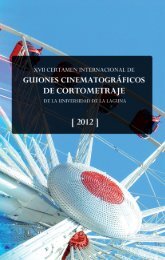You also want an ePaper? Increase the reach of your titles
YUMPU automatically turns print PDFs into web optimized ePapers that Google loves.
y-.,runr<br />
t<br />
Figure 5<br />
Cross section of a polyporoid layer.<br />
dry the layers of polyporoid under a<br />
press to prevent them from warping.<br />
Experiment 1. As a first step, let,s<br />
find the density of the pores-that<br />
is, the number of pores per unit area<br />
in a layer of a polyporoid. Then we'll<br />
try to measure the diameterD of the<br />
pores. These tasks are rather easy to<br />
do with a microscope, but you can<br />
still do them without one. We'lluse<br />
an ordinary photographic enlarger or<br />
film projector. With a sharp knife or<br />
razorblade cut off a thin section of<br />
the fruit of a polyporoid, which<br />
should be oriented perpendicular to<br />
the pores-that is, parallel to the<br />
bottom surface of the mushroom.<br />
Then place the section in the enlarger<br />
(instead of a negative), focus<br />
the image, and make a magnified<br />
positive photograph of the section.<br />
However, it would be sufficient just<br />
to trace the outline of the pores on<br />
an ordinary sheet of paper. All that,s<br />
left is to calibrate the magnification<br />
of the enlarger/ count the number of<br />
pores in the photograph, and measure<br />
the diameter of the pores. By<br />
way of example, figure 5 shows the<br />
shadow projection of the cross section<br />
of a polyporoid with a 2-mm<br />
scaling bar. Figure 5 is a picture of<br />
the surface layer of a polyporoid obtained<br />
with a more complicated device-the<br />
scanning electron microscope.<br />
The scaiing light bar here<br />
corresponds to 1 mm. These figures<br />
show that the average diameterD of<br />
the pores is about 1/3 mm. The deviation<br />
is not too large, although,<br />
strictly speaking, the pore's shape is<br />
far from being a perfect cylinder.<br />
Try to figure out why we used a thin<br />
section of the mushroom for our measurements<br />
instead of the entire layer,<br />
even though the entire layer also lets<br />
the liglrt through (the pore tubes go all<br />
the way through the mushroom).<br />
Experiment 2. It's interesting to<br />
look at objects through a polyporoid<br />
layer. Turn on<br />
your desk lamp,<br />
place a porous<br />
layer of a polyporoid<br />
in the path<br />
of the light, and<br />
observe the hot<br />
filament through<br />
the pores. To do<br />
this experiment<br />
you need to practice<br />
getting the<br />
right direction and<br />
turning the layer<br />
by small angles.<br />
Thepore-tubes are<br />
narrow/ which results<br />
in a comparatively<br />
small sighting<br />
angle: 0-"* -<br />
DIL ..1. Even for<br />
alayer only3 mm<br />
thic( this is about<br />
Figure 6<br />
Elecfton micrograph of the sudace of a polyporoid.<br />
10o, and for a layer 3 cm thick, it's 1 o.<br />
Figure 7 shows the hot filament of a<br />
tungsten lamp photographed through<br />
the porous layer of a polyporoid.<br />
After you do the second experiment,<br />
you'll probably conclude that<br />
the reflection of visible light from the<br />
walls was very small, as if the walls<br />
were black. Second, you'll observe<br />
some blurring of the {ilament image<br />
connected with the diffraction of light<br />
in narrow openings (which is what<br />
the pores are). For X-ray radiation the<br />
Figure 7<br />
Hot filament of a tungsten lamp photographed tfuough the<br />
porous layer of a polyporoid placed in front of the leis.<br />
Note that the image is somewhat blurred, which is the<br />
result of light diffraetion in the porcs.<br />
0lJrirrllil/rrlrulr 1 3



